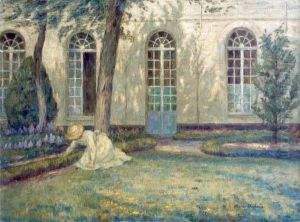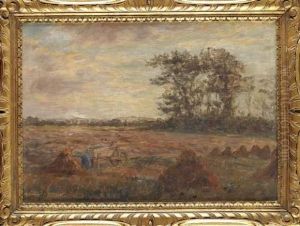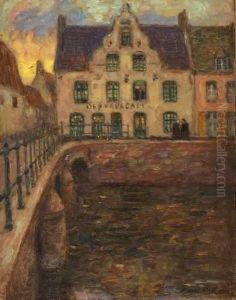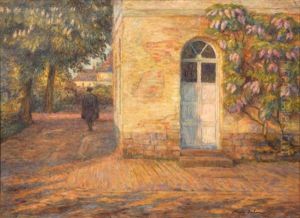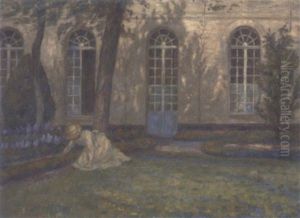Marie Genevieve Duhem Paintings
Marie Geneviève Duhem, born in 1867, was a French painter whose contributions to art, though not as widely recognized as those of her contemporaries, remain significant in the study of French post-impressionism. Her work is characterized by its delicate sensitivity, nuanced use of color, and the intimate portrayal of domestic and natural scenes. Duhem's artistic journey was deeply influenced by her personal life and the broader cultural movements of her time, offering a unique lens through which to view the evolution of early 20th-century European art.
Marie Geneviève Duhem's career was notably intertwined with the Post-Impressionist movement, although her work also displayed characteristics of Impressionism, with its emphasis on light and color. Unlike many of her male counterparts, Duhem's subjects often focused on the serene and the tranquil, seeking to capture the beauty in everyday life. Her paintings often depicted interior scenes, landscapes, and still lifes, imbued with a sense of peaceful contemplation.
Despite her considerable talent, Marie Duhem's artistic achievements were somewhat overshadowed by the prevailing gender norms of her era, which limited women's opportunities in the art world. However, she found support and recognition within smaller, avant-garde circles. Duhem was closely associated with the Nabis, a group of Post-Impressionist avant-garde artists who shared her interest in decorative and symbolic art. This connection helped her in developing her stylistic approach, which merged the decorative with an acute observation of the natural world.
Marie Geneviève Duhem's legacy is that of a pioneering woman artist who managed to carve a niche for herself in a male-dominated art world. Through her paintings, she communicated a deeply personal vision, marked by a quiet intensity and a profound appreciation for the subtleties of the world around her. She passed away in 1946, leaving behind a body of work that continues to be appreciated for its contribution to Post-Impressionism and its reflection of the nuances of early 20th-century French society.
